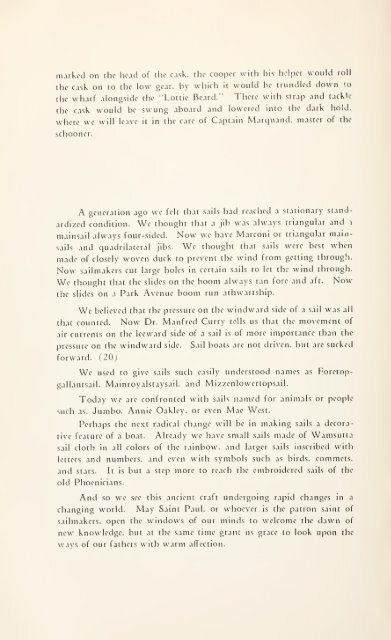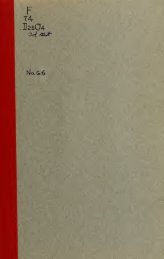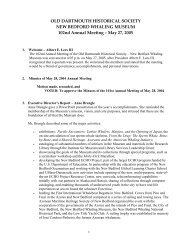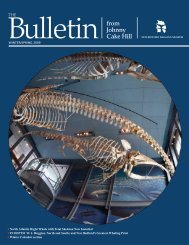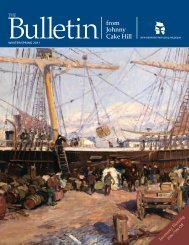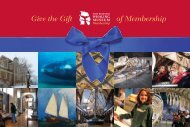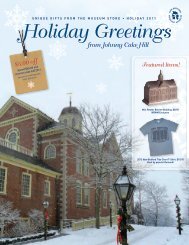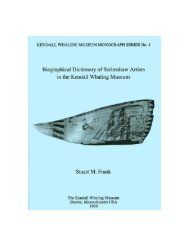Old Dartmouth historical sketches - New Bedford Whaling Museum
Old Dartmouth historical sketches - New Bedford Whaling Museum
Old Dartmouth historical sketches - New Bedford Whaling Museum
Create successful ePaper yourself
Turn your PDF publications into a flip-book with our unique Google optimized e-Paper software.
marked on the head of the cask, the cooper with his helper would roll<br />
the cask on to the low gear, by which it would be trundled down 'o<br />
the wharf alongside the "Lottie Beard." There with strap and tackle<br />
the cask would be swung aboard and lowered into the dark hold,<br />
where we will leave it in the care of Captain Marquand. master of the<br />
schooner.<br />
A generation ago we felt that sails had reached a stationary standardized<br />
condition. We thought that a jib was always triangular and i<br />
mainsail always four-sided. Now we have Marconi or triangular mainsails<br />
and quadrilateral jibs. We thought that sails were best when<br />
made of closely woven duck to prevent the wind from getting through.<br />
Now sailmakers cut large holes in certain sails to let the wind through.<br />
We thought that the slides on the boom always ran fore and aft. Now<br />
the slides on a Park Avenue boom run athwartship.<br />
We believed that the pressure on the windward side of a sail<br />
was all<br />
that counted. Now Dr. Manfred Curry tells us that the movement of<br />
air currents on the leeward side of a sail is of more importance than the<br />
pressure on the windward side.<br />
forward. (20)<br />
Sail boats are not driven, but are sucked<br />
We used to give sails such easily understood names as Forctopgallantsail.<br />
Mainroyalstaysail. and Mizzcnlowertopsail.<br />
Today we are confronted with sails named for animals or people<br />
such as. Jumbo, Annie Oakley, or even Mae West.<br />
Perhaps the next radical change will be in making sails a decorative<br />
feature of a boat. Already we have small sails made of Wamsutta<br />
sail cloth in all colors of the rainbow, and larger sails inscribed with<br />
letters and numbers, and even with symbols such as birds, commcts,<br />
and stars. It is but a step more to reach the embroidered sails of the<br />
old Phoenicians.<br />
And so we see this ancient craft undergoing rapid changes in a<br />
changing world. May Saint Paul, or whoever is the patron saint of<br />
sailmakers. open the windows of our minds to welcome the dawn of<br />
new knowledge, but at the same time grant us grace to look upon the<br />
ways of our fathers with warm affection.


